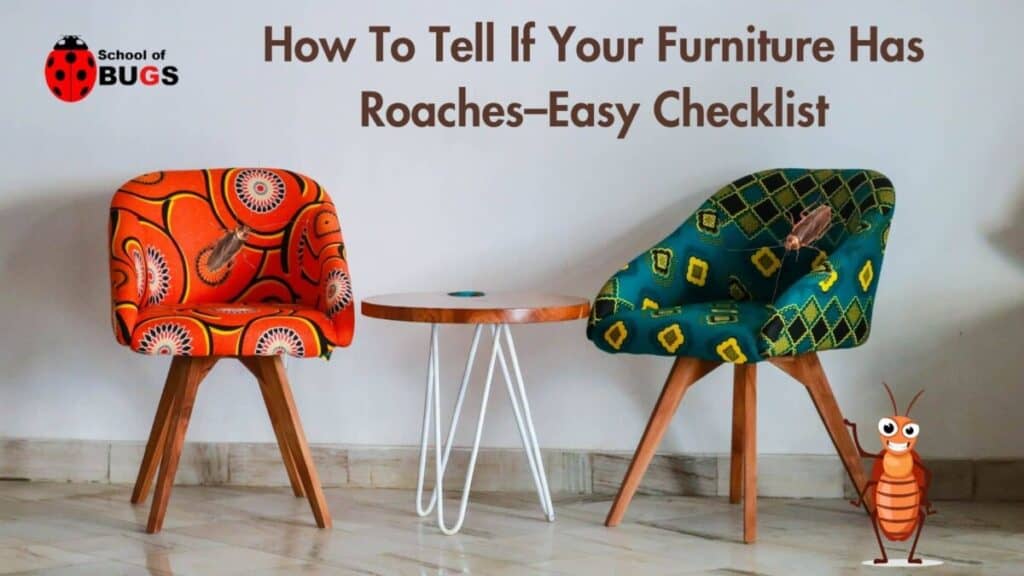
Cockroaches have very few defense mechanisms, but hiding to avoid detection is probably their most used survival instinct.
These insects will typically hide and infest areas that are dark, hidden, and close to food and water sources. Kitchens and bathrooms are the most common areas, but the furniture will work too. How can you tell if your furniture has roaches?
To check furniture for a cockroach infestation, shine a flashlight all along cracks and crevices to check for black stains and specs, egg sacs, or live or dead cockroaches.
Cockroaches will also emit a musty, pungent odor in the areas in which they hide. Signs of an infestation will require fumigation of the furniture.

Chances are you probably already know the common cockroach hiding places, but furniture is also a known cockroach harborage area.
In this checklist, we are going to tell you everything you need to know about furniture roach infestations. We will also explore ways to eradicate the pests from your furniture.
Cockroach Furniture Infestation Explained
If I had to rank the areas inside of a home that roaches like to infest, I would say behind the walls, underneath appliances, underneath sinks, and furniture coming in last.
It is not overly common, but roaches can and do set up their harborage areas within and underneath furniture.
Any space that is dark, warm, quiet, and within reasonable distance to food and water is suitable for cockroaches.
Smaller pieces of furniture like single chairs, coffee tables, desks, or footstools are likely less preferable to large sofas, large dressers, cabinets, or even entertainment stands.
Furthermore, if the furniture is seldom used and largely decorative, this will also appeal to roaches since they will remain undisturbed.
As creepy as it sounds, roaches have also been known to infest box springs and mattresses, particularly in beds that are not used often, such as in guest rooms.
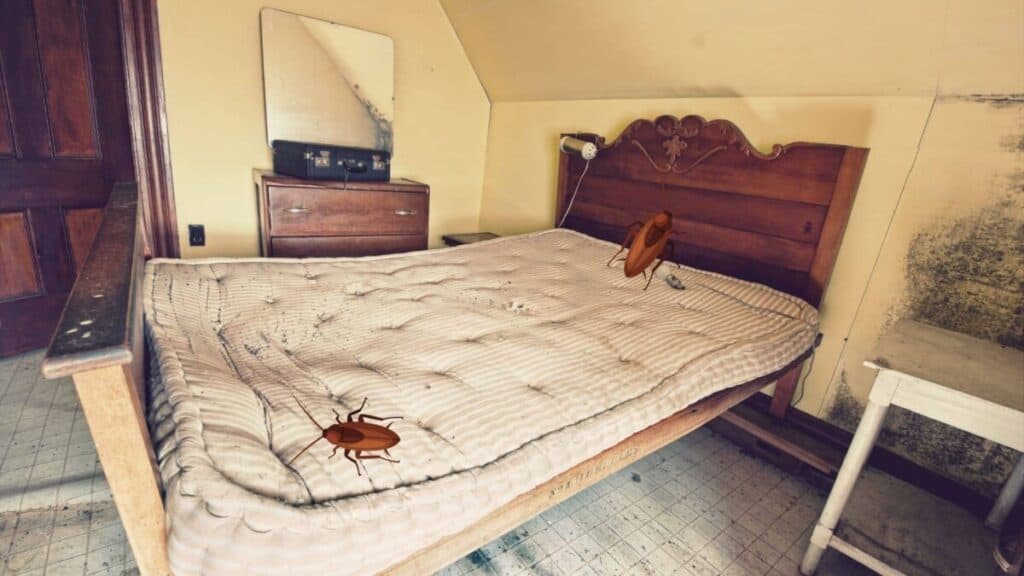
Cockroaches will need to remain dormant and in hiding during the day, so if you are away at work during the day, this suits them well.
Since roaches will want to have as little contact with people as possible, the immediate underside of furniture, such as under a sofa, is both dark and warm enough for the insects to avoid contact.
You may even find them behind large pictures on the wall or even hiding in closets as well. But they will not want to travel far to find food and moisture, so keep that in mind as well.
Like bed bugs, roaches can slip into the smallest cracks and crevices, which makes it easy for them to slip into the foundation of furniture. They can extract and expand their exoskeletons to accommodate these obstacles.
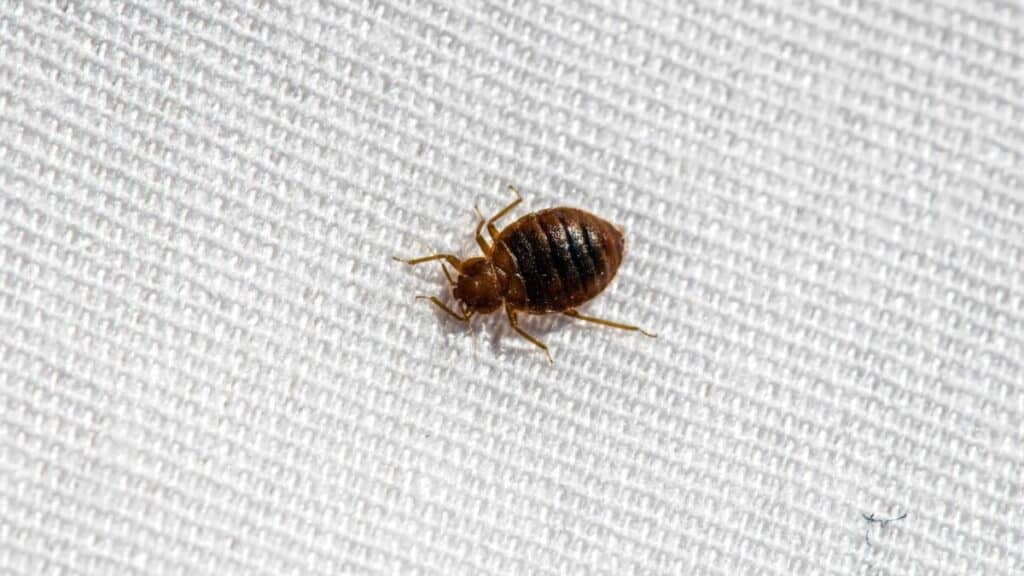
Know that you know roaches can infest furniture, what are some warning signs you can look out for?
Warning Signs of Roach Infestation in Furniture
If you have noticed the presence of cockroaches on or near furniture, there are some warning signs you can look for to confirm an infestation.
Presence of Live or Dead Roaches
First and foremost, finding roaches in furniture is the most obvious sign. For a sofa, you can pull off the cushions and use a flashlight to check between the seams.
Make sure you shine the flashlight in all the cracks and crevices. Smaller roaches, such as German cockroaches, are likely to bury themselves deep into the foundation of the sofa.
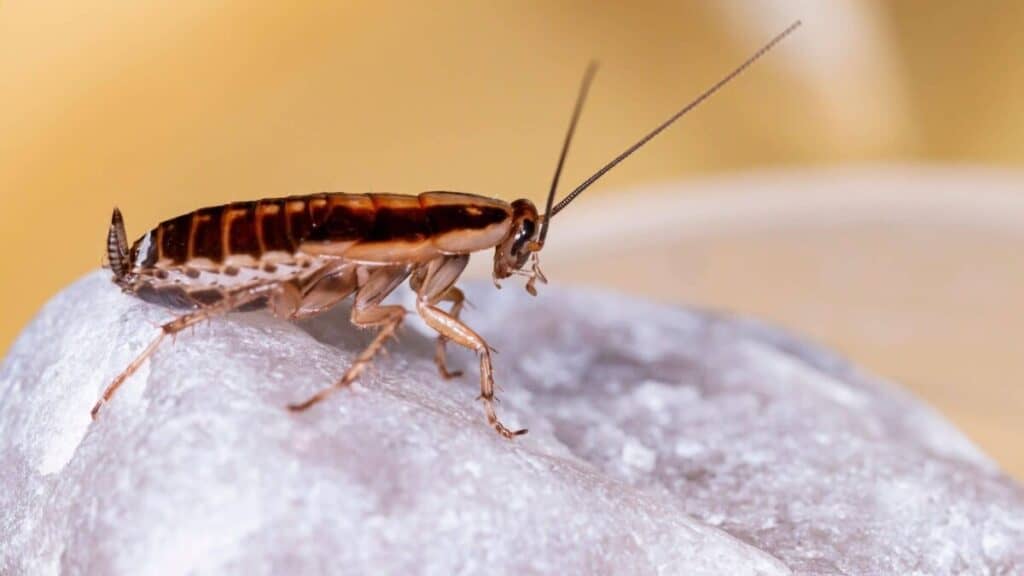
Once you check these areas, flip the couch over to expose the underside of the furniture. If there is a piece of mesh cloth, you can remove this if need be.
If the roaches are not already scurrying away when you do this, shine the light along the corners and edges of the sofa. When hiding, roaches will clump together, and this area would be ideal for that.
Furthermore, the presence of dead roaches or egg sacs is also a sign of a possible infestation. Even if the infestation has moved, this lets you know that the sofa or piece of furniture needs to be treated.
Cockroach Odors
Another common sign of an infestation is the scent cockroaches emit. This scent has often been described as having a musty, mold-like smell.

If you smell this odor emitting from the furniture, repeat the process discussed above to effectively search the furniture. Where the smell is present almost always means that the infestation is present or nearby.
If you find nothing, consider checking along the baseboards (the gap where the wall meets the floor). It could be that the insects rotate between the furniture and another satellite harborage area nearby behind the wall.
There is no mistaking the pungency of cockroach odors.
Feces and Other Stains
If the roaches have infested the furniture, you are likely going to find the presence of live roaches. But if you cannot find them, you can also check for the presence of roach feces and stains they leave behind.
Cockroach feces are small, black-colored specs (think coffee grinds). The stains are usually the same color. If you find evidence of this, an infestation is most certainly present or again, likely nearby behind the wall.
Even if you do not find roaches, you should definitely clean this waste up. Roach feces can exacerbate allergies and even spread diseases.
You should also proceed to treat this piece of furniture with a residual pesticide of some sort. Boric acid dusting is also beneficial.

Ootheca cases
Finally, you can also easily identify an infestation if you find cockroach eggs sacs (ootheca).
If an infestation is present, this means that males and females are actively reproducing at an alarming rate.
These egg sacs are small, rectangular-shaped brown deposits that will have small lines and ridges across the egg casing.
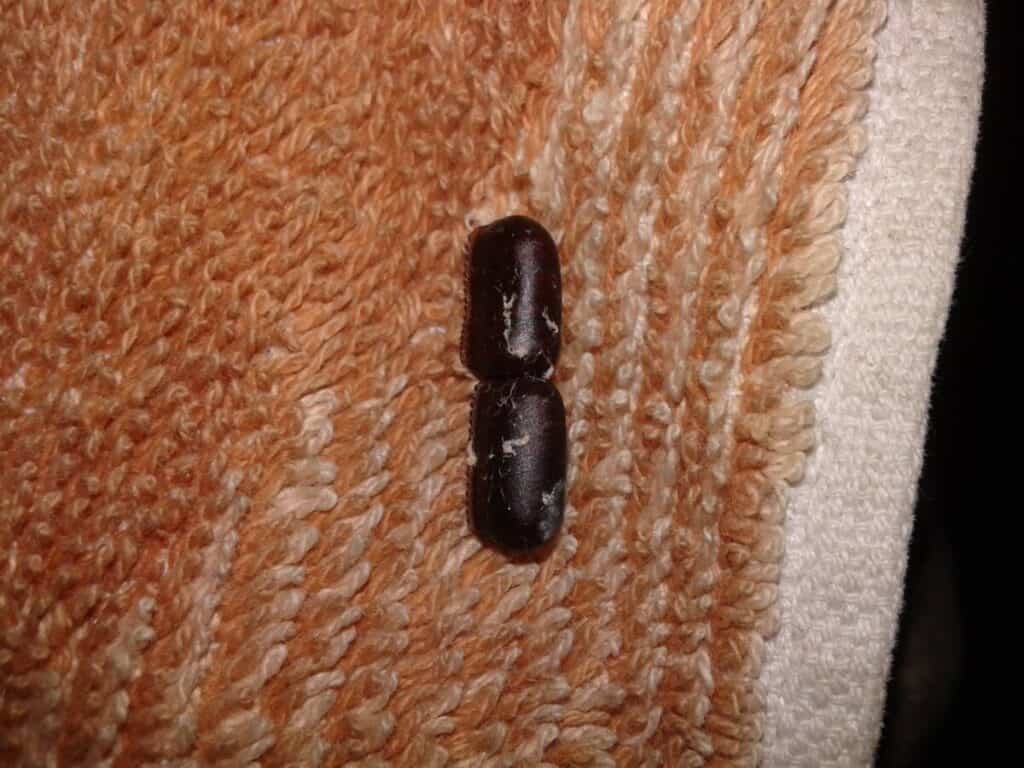
Egg sacs may be deposited anywhere within cracks and crevices of the furniture or even on the floor underneath the furniture.
Always remove and dispose of these casings by wearing gloves and sweeping the casings up. Seal them in a trash bag and take them to the outdoor disposal bin immediately.
Types of Furniture Cockroaches Infest
Cockroaches can infest practically any type of furniture. But the less occupied and used the furniture is daily, the better.
Sofas, love seats, couches, and large, bulky chairs are perhaps the most preferable for roaches since the insects can hide easily within these pieces.
But tables, large cabinets, and dressers, as well as the insides of drawers also provide plenty of hiding spots for the insects.
To be safe, you can inspect all of your furniture by following the steps mentioned above for properly inspecting furniture for cockroaches.
How To Eradicate Cockroaches From Furniture
If you find a full-blown infestation, your best tool to use is a knock-down insecticide of some sort to immediately kill the live roaches on contact.
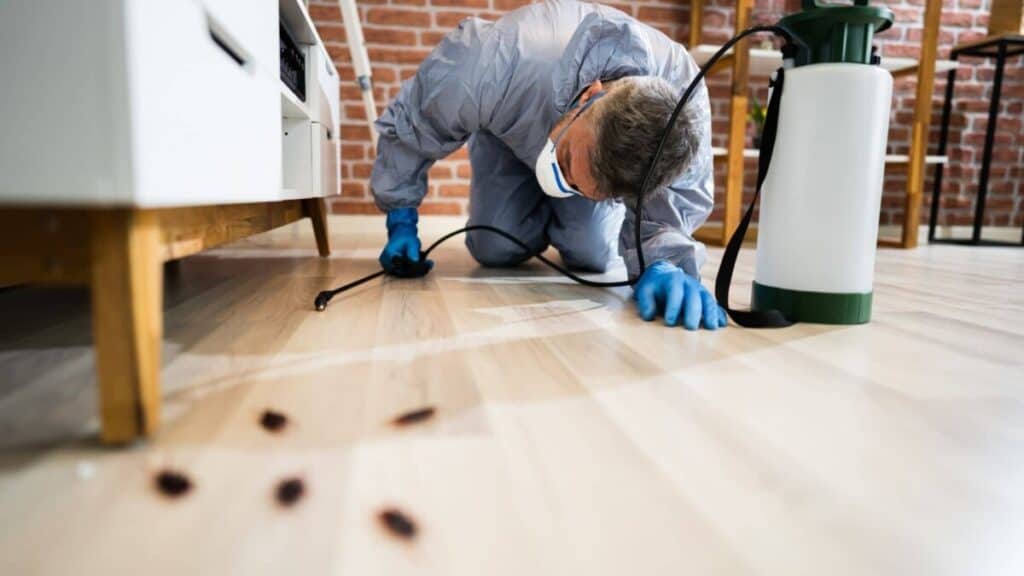
But you will also need to ensure you kill any hiding roaches as well. Using boric acid all along the edges of the furniture is a great method to kill these pests.
You will also want to ensure you remove any egg sacs, and vacuuming is a great way to take care of this problem.
To be 100% certain, it is also advisable to treat your entire home as well. Roaches will branch out to other areas if an indoor infestation is too large. Infesting furniture would be a sure sign of this likelihood.
If the infestation is large, it is advisable to consult with a pest control professional immediately.
Summary
With this easy checklist, you can easily inspect and treat your furniture to ensure a roach infestation is successfully eradicated.
Roaches typically do not infest furniture unless areas in the kitchen or bathroom are becoming filled with ever-expanding colonies of roaches. This means you will need to treat your entire home as well.
Alright, that’s it for this article, here are a few hand-selected articles that you might also find interesting reads:
Can Roaches Transfer To a New House While Moving?What Happens If You Step on a Cockroach Barefoot?
Cockroach in My Room Can’t Sleep – 7 Actions for Immediate Results
Recent Posts
Tiny Black Bugs in Bathroom NO WINGS: What They Are and What to Do!
Finding tiny black bugs in your bathroom can be uncomfortable, to say the least. Especially if they are persistent, or they appear in very large numbers, which they often like to do. When it...
Tiny Black Bugs in Plant Soil - What Are They & What To Do About It
A short horror story: You get a new houseplant. You do your best to take care of it. You’ve ensured that it has the right soil, the right amount of sun, it gets enough water. And then one day, you...

